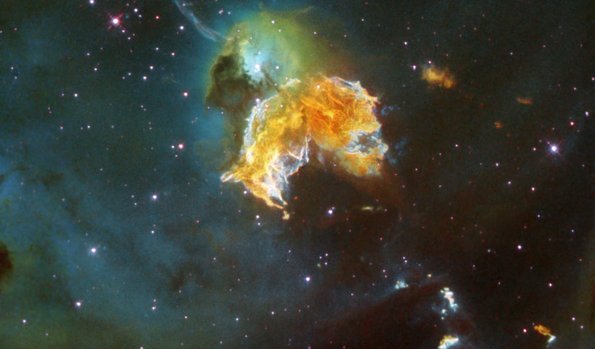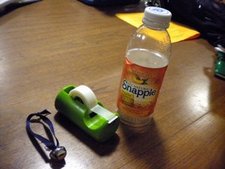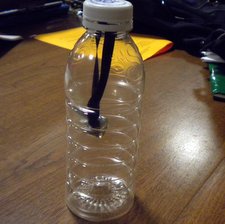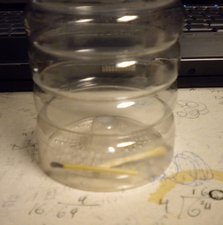Sound in Space?
Hollywood directors love using sound effects in outer space for added drama, but are these sounds really possible? This demo will explore the possibility of sound in space and the ways we can communicate with astronauts on the International Space Station.

Supernova Remant N 63A: The cosmic remains of a massive star explosion.
Image Credit: NASA/ESA/HEIC and The Hubble Heritage Team



What You Need
- Empty Snapple© bottle
- Matches
- A small bell
- Stick tack/tape
- A Popsicle stick/any short, firm stick
What to Do
Take the small bell, and attach it to the popsicle stick. Attach the opposite end of the stick to the bottom of the Snapple bottle cap. Shake the bottle cap to ensure that the bell still makes an audible jingle. Now screw the cap onto the bottle and shake. At this point, you should be able to hear the bell jingle inside of the bottle.
Unscrew the cap and remove the bell from the bottle. Light two matches and drop them into the bottle. As soon as the matches are dropped in, screw the cap and bell back onto the bottle. Wait until the matches are extinguished and the bottle cools, if it is hot. Then shake the bottle once again. The bell should be much quieter than before -- if it’s even audible at all.
What's Going On?
Unlike light, sound requires a medium to travel through. This simply means that in order to hear sound there has to be something for sound to travel through. Sound travels by vibrating the particles in the medium so that they bump into each other. As the vibrations of the particles reach your ear, your ear drum receives the vibrations which the brain then interprets as sound.
In the vacuum of space, there are no (or very, very few) particles to vibrate, so sound cannot travel through this medium. You might think this presents a communications conundrum for NASA: How can we talk to astronauts who are orbiting earth? The solution is radio waves. Radio waves travel perfectly fine through a vacuum because they are a type of electromagnetic wave (light), and electromagnetic waves do not need a medium to travel through. Similarly, we can still see light emitted from the sun even though a vacuum stands between the sun and earth.
When the lighted matches are dropped into the bottle and the bottle is sealed, the fire uses up the oxygen that is in the bottle. Without most of the bottle’s original oxygen, a partial albeit imperfect vacuum forms inside the bottle. Because of this vacuum, you can no longer hear the bell jingle until you allow air to enter the bottle.
What Changes . . .
- If you use more matches in the bottle? Will the bell be even harder to hear, or will the matches only burn the oxygen faster?
- After the matches burn. Does it matter how hot or cold the bottle is to improve the effect of the vacuum?
- Matthew Goszewski











